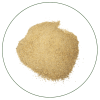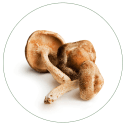
Does your horse need a multivitamin/mineral?
Questions about multivitamin and multimineral supplements come across my desk several times a week. The topic is often on internet horse bulletin boards and among commonly asked questions on commercial feed company websites. The following is a great example of a recent consultation that addresses multivitamin and multimineral concerns.
An owner has two warmblood geldings aged ten and fourteen. The horses are on a commercial feed and are fed the recommended amount. The horses have turnout on grass for 2 hours a day, and are fed 6 flakes of orchard grass per day. The horses work five days per week. One horse is competing at Prix St George and Intermediare 1, while the other is competing at Fourth level.
According to the owner, both horses have very dry coats and one horse’s black coat looks bleached despite a UV fly sheet. The ends of his tail have turned red. She has a difficult time keeping topline on the other horse, a chestnut. A CBC was conducted on both horses and showed low vitamin E for both.
When the owner called me, I suggested she get a hay analysis done so that we could get a better picture of possible nutritional deficiencies. The hay analysis showed low crude protein at 9%, low zinc and copper, very low vitamin E, low selenium, high iron, low magnesium and a less than ideal calcium/phosphorus ratio of 1.1: 1.
The owner asked me if putting the horses on a multivitamin/mineral would correct the deficiencies.
My answer: one supplement cannot tackle multiple deficiencies.
Purposes of a multivitamin/multimineral:
Multivitamin/minerals are broad-spectrum supplements to help fill in nutritional gaps, especially when it comes to minerals.
Depending on the multivitamin/multimineral supplement you choose, it is possible to balance some mineral deficiencies with copper and zinc and in some cases selenium.
Minerals used in most commercial horse feeds are in their inorganic form (carbonates, oxides, and sulfates) and provide low bioavailability. Therefore many owners add a multivitamin/mineral to augment the feed. Some multivitamin/mineral formulas can be used as a ration balancer with added timothy or alfalfa pellets.
I personally feed a multivitamin/multimineral as a kind of insurance policy. I know that the broad-spectrum micro and macro mineral needs are covered as well as vitamin A and vitamin D supplied at beneficial levels.
I consider a multivitamin/mineral as the foundation of my horses’ supplement program. For example, my twenty year old rescue Ginger, is only fed a multivitamin/mineral supplement because she has no other issues. My thirty-three year old Lionheart, needs additional supplementation because of his age and is also fed BioStar’s Adaptor EQ and Circuvate EQ.
Vitamin E:
To therapeutically raise vitamin E levels for a horse, we need at least 2,000 IUs of supplemental d-alpha tocopherol, the non-synthetic form of vitamin E. Horses in hard work may need 3,000 IUs. Drastically low levels of vitamin E in a horse may require 5,000 IUs per the veterinarian. Maintenance levels for horses not getting enough vitamin E from pasture and hay need supplemental vitamin E at 1,000 IUs per day.
A multivitamin/multimineral supplement covers several key areas of equine health: macro and micro minerals, vitamin E and the other fat-soluble vitamins like A and D, added protein and amino acids, and in some formulas the addition of probiotics and B vitamins. Many multivitamin/minerals add palatability ingredients such as dried distillers grains with solubles, molasses, vegetable oil, and soy husks. However, only so many ingredients are going to fit into one serving size, especially when palatability ingredients often weigh the most and have the largest volume in a formula.
A multivitamin/multimineral formula may have 100 IUs or 200 IUs of vitamin E as part of a daily serving, but that amount is not anywhere near the maintenance level of 1,000 IUs. The supplement companies are not at fault as they can only fit so much into a serving and the low vitamin E levels we are seeing in horses is a relatively new phenomenon.
I recommend supplementing for vitamin E specifically with Elevate by Kentucky Performance Products. This is the best supplement for vitamin E particularly for performance horses, broodmares, and horses with little or no fresh pasture. With a maintenance serving of 1,000 IUs, this is also a wonderful supplement for horses in the winter.
There are food sources of vitamin E such as camelina oil, hemp seed oil, almonds, and sunflower seeds. However, to get to 1,000 IUs per day you have to feed A LOT of these foods. For horses on healthy pasture or those with a hay analysis showing adequate vitamin E, supplementing with any of these foods is beneficial. However, for therapeutic and maintenance amounts of vitamin E at 1,000 IUs per day, it is best to go with Elevate, or Nano-E from Kentucky Equine Research (KER).
B vitamins:
Horses make their own B-vitamins including biotin from the fermentation of forages by the microbes in the hindgut. Commercial feeds are fortified with B-vitamins and many multivitamin/mineral supplements also provide B-vitamins. A good food source is nutritional yeast or brewer’s yeast.
Biotin is known to improve hoof health at a therapeutic level of 20 milligrams per day. The sulfur containing amino acids like methionine are also important co-factors that affect hoof quality. Many companies use the synthetic version of methionine, dl methionine. Much like vitamin E’s synthetic version, dl methionine has a much lower rate of bioavailability.
According to Kentucky Equine Research,
once biotin has been mixed with other ingredients, particularly oils and other fats, it has a relatively short shelf life, around six months from the time of manufacture. Buying fresh product and using it up within this time frame is the best way to ensure maximum results from a biotin supplement.”
If your horse needs a healthier hoof, adding a specific hoof supplement is the best way to therapeutically support the foot.
Multivitamin/mineral supplements that provide essential and non-essential amino acids and a high protein percentage (over 20%) can provide hoof support by supplying the sulfur containing amino acids with the biotin the horse already makes in his body.
Other Vitamins:
Vitamin A that is synthesized with components of crude oil (acetylene and acetone also known as nail polish remover) is commonly added to multivitamin/multimineral supplements. Alternatively, food sources of vitamin A include carrots and fish oils. One small carrot provides 8,353 IUs of vitamin A.
Vitamin D3 in multivitamin/mineral supplements is predominantly from sheep’s wool (lanolin). Food sources of vitamin D2 are from grass, hay, algae, and mushrooms.
Protein:
Many horses need protein from other sources because protein percentage varies in hay and forage. Feed companies have responded with feeds and supplements with greater percentages of protein. Multivitamin/mineral supplements can also fill amino acid gaps, especially with the branched chain amino acids (BCAAs).
Horses that need more topline or muscling can benefit from a multivitamin/mineral with therapeutic levels of protein at 30% or higher.
Protein quality is measured by BV (Biological Value), which is represented on a scale of 0-100, with 100 being the highest bioavailability.
Undenatured whey protein has a BV of 104. Casein protein has a BV of 77. Pea protein has a BV of 65, partly due to an incomplete amino acid profile and the lectin and phytic acid content. Soy protein has a BV of 74. It also contains phytic acid and lectins, but does provide a complete amino acid profile. (There may be other personal considerations with soy protein including soy allergies, the fact that soy is genetically modified, and the use of glyphosate).
Bioavailability of Minerals:
Like many riders and owners, you probably do not have extra time to go down nutritional rabbit holes, or follow endless Google searches to look up ingredients. Therefore it is important to remember that bioavailability is perhaps more important than how many milligrams per serving of XYZ ingredient because the form of the nutrient matters.
Inorganic minerals made from ground up rock (carbonates, oxides, sulfates) have a 0-10% bioavailability.
Mineral chelates such as amino acid chelates, polysaccharide chelate complexes, and proteinates provide significantly higher bioavailability of 60-80%. They are also more costly than carbonates, oxides and sulfates. It is important to remember that when our horses eat hay and grass the minerals in the forage are already chelated with amino acids, making those minerals more bioavailable to both the plant and the horses.
When to use a multivitamin/mineral supplement:
- If you are feeding a complete feed and following the manufacturer’s recommendations for pounds per day, and your hay is tested and provides enough protein, macro and micro minerals, then you may not need to supplement with a multivitamin / multimineral.
- If you are feeding a whole food diet, or are mixing your own feed ingredients, you will need to use a multivitamin/multimineral.
- If you can not have your hay and forage tested, you might consider adding a multivitamin/mineral to cover the mineral needs of your horse.
- Performance horses have higher mineral and protein needs and can benefit from a multivitamin/multimineral.
- Senior horses may need more protein and trace minerals, so a multivitamin/multimineral is important for them.
- Due to such low percentages of vitamin E in hay, I recommend requesting a CBC on your horse at least once per year (performance horses twice per year) to see where the vitamin E and selenium levels are. I highly recommend adding Elevate or Nano E for maintenance and therapeutic levels of vitamin E.
 Coming September and October 2019!
Coming September and October 2019!
Look for new Optimum EQ (powder) and new Optimum Senior EQ in September! Optimum JS and Optimum Senior JS for joint support will follow in October.
















